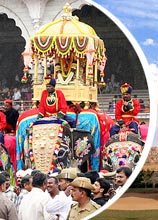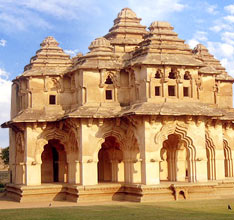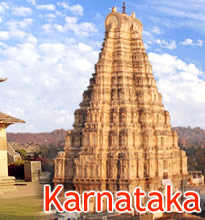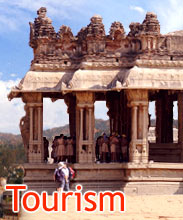 One
of the newest entrants in the National Park list (2 Sep, 1987), the
Kudremukh National Park has been named after the eponymous peak that is
shaped like a horse face. The Kudremukh town adjacent to the park is
primarily an iron ore-mining town where the government-owned Kudremukh
Iron Ore Company Limited (KIOCL) operates.
One
of the newest entrants in the National Park list (2 Sep, 1987), the
Kudremukh National Park has been named after the eponymous peak that is
shaped like a horse face. The Kudremukh town adjacent to the park is
primarily an iron ore-mining town where the government-owned Kudremukh
Iron Ore Company Limited (KIOCL) operates.The Kudremukh region records an average annual rainfall of 7,000 mm and the wet climate has resulted in the formation of thousands of streams in the region converging to form three major rivers of the region, Tunga, Bhadra and Nethravathi. The Kadambi waterfalls are a major attraction of the Kudremukh National Park.
Kudremukh is a trekker's paradise with a number of trekking routes winding through undulating hills. One has to obtain an entry permit for trekking inside the park from the Range Officers or Deputy Conservator of Forests.
Flora at Kudremukh National Park
The flora in Kudremukh National Park consists of mostly evergreen and semi-evergreen forests near the coastal plains on the western portion and the shoal-grassland habitat at elevations above 1400m on the Western Ghats.
Fauna at Kudremukh National Park
The main wildlife species in Kudremukh include tiger, leopard, wild dog, jackal, lion-tailed macaque, common langur, sloth bear, gaur, sambar, spotted deer, barking deer, Malabar giant squirrel, giant flying squirrel, porcupine and the mongoose.
How to Reach Kudremukh National Park
By Air
The nearest airport to the park is Mangalore, 130km away.
By Rail
The nearest railway station to the park is Mangalore.
By Road
Kudremukh is connected by road to Kalasa - 20km, Karkala - 50km, Mudigere - 75km, Mangalore 130km, and Bangalore 350km.










